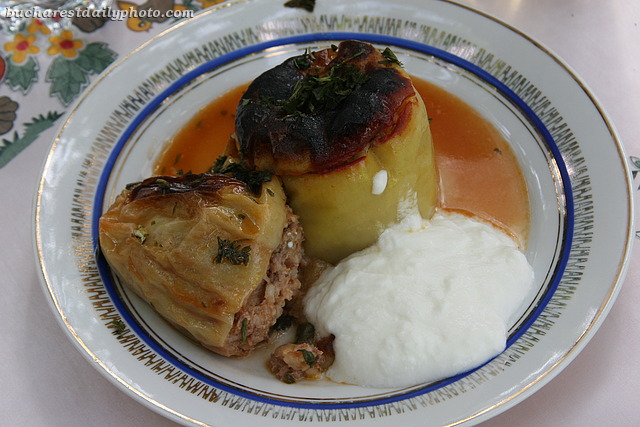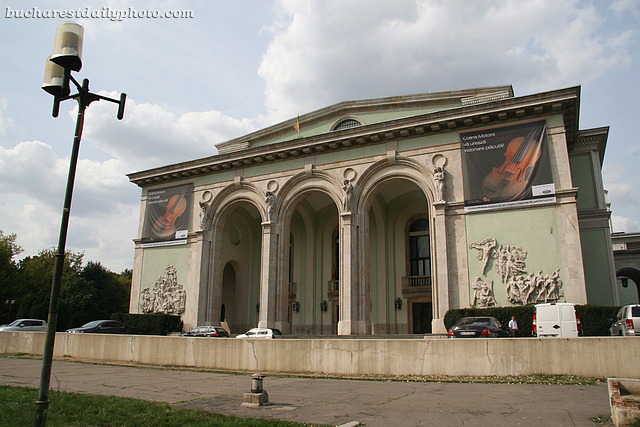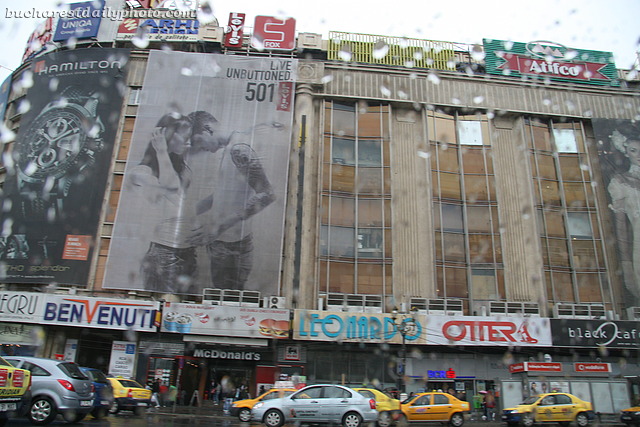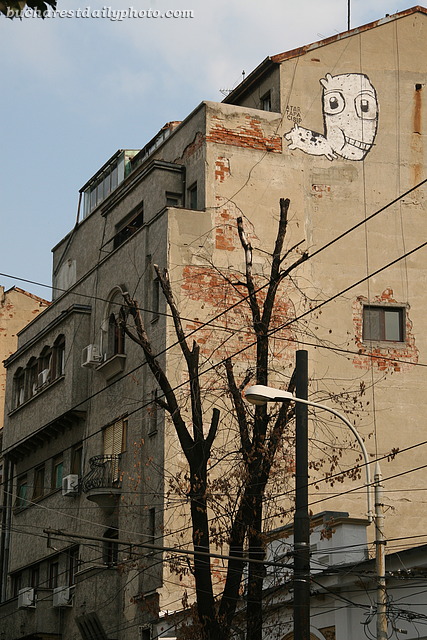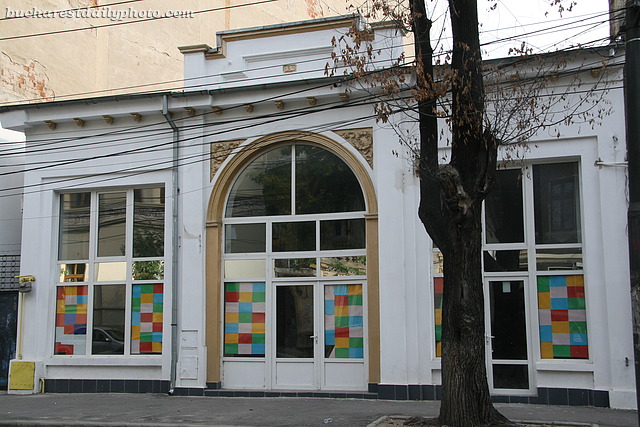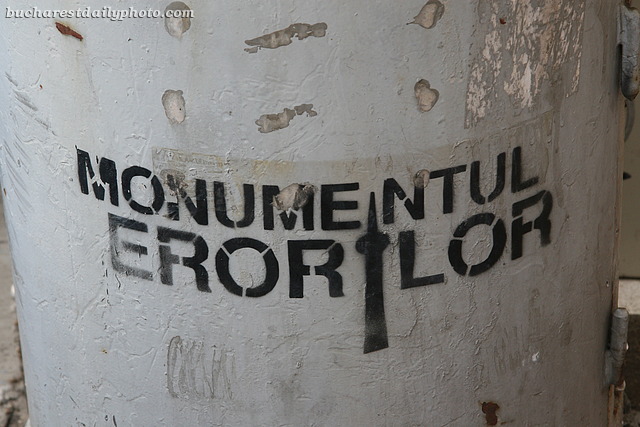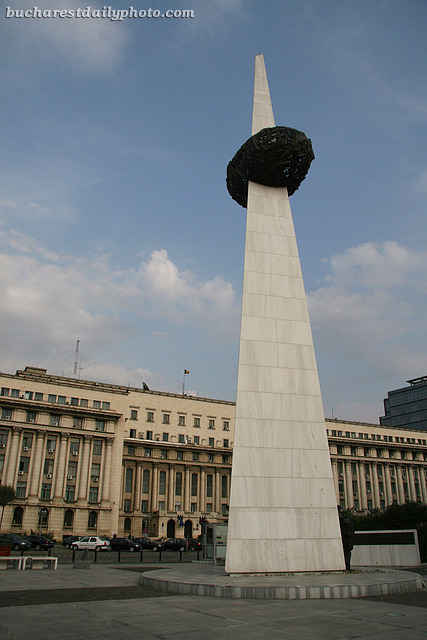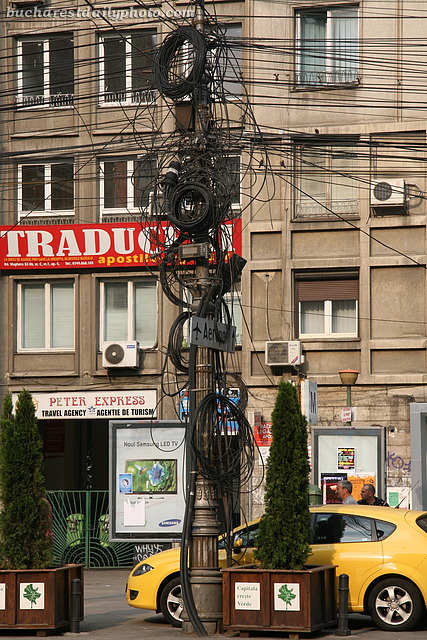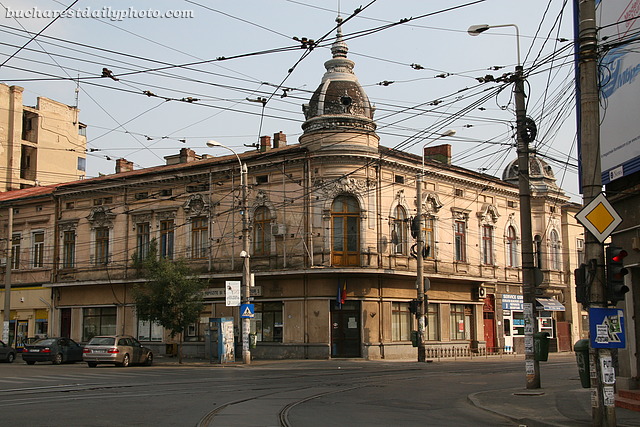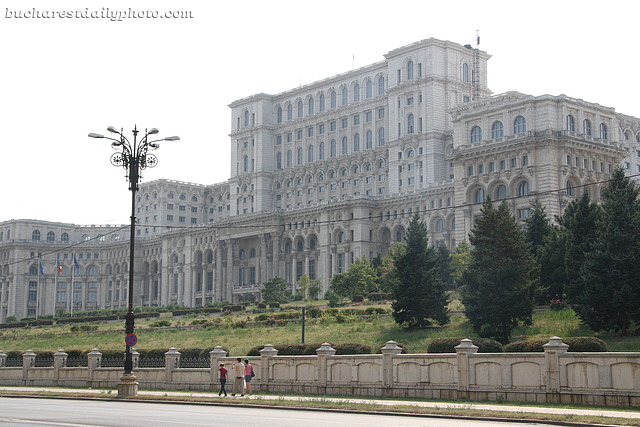I lived outside Romania for a few years and during that time I was told by my friends of different nationalities that their impression of Eastern European food is that it involves a lot of sour cream. I have to agree that this impression is partially true and in order not to dissapoint my friends, I decided to post a photo of one of my favorite Romanian dishes which is usually served with sour cream. The “stuffed peppers” (ardei umpluţi in Romanian) is an Eastern European dish consisting of peppers filled with a mixture of ground meat, rice, onions and other spices, boiled in a tomato sauce. You can find it in different variations in all countries in Eastern Europe. In Romania we also have a vegetarian version from which the meat is absent.
Bucharest’s Opera House is the main venue for seeing opera and ballet performances in Bucharest. Their annual season runs from October to June and tickets are usually dirt cheap, a far cry from tickets to Madonna’s concert 🙂 They tend to stick to a classical repertoire. Due to lack of funding the sets are not too spectacular but performances are of a high quality. The edifice was built in the years 1952-1953 after the design by a group of architects led by Octav Doicescu. These were the first years of communism in Romania and the style condoned by the regime was called “socialist realism“, the official artistic movement of the Soviet Union. The socialist realism required an artificial return to the classical theme, away from the modernist tendencies of the day, which is why the Opera building has a neoclassical design. One example of the socialist realism touch, that can be seen in the photo, are the bas reliefs on the facade. The interior is in the tradition of the 18th century Italian Opera, with a central dome and three tiers of balconies. It can seat 1200 people. The inauguration of the new building of the Opera House was celebrated by a performance of Tchaikovsky’s Queen of Spades on January 9th, 1954 followed by the ballet Coppelia the following night.
Many of the photo blogs that I’m following, for places located in the Northern Hemisphere, had their expected “summer is over” post. After two days of rain and a drop in temperature that made me take a sweater out of storage and put away my sandals, it’s time to face the reality and write my own “summer is over” post. Even though the prognosis for Bucharest is that it will get warmer in the next few days (still rainy though) with unwilling hands I’m typing down: autumn has arrived. From now on until late March we would cheer if we get a sunny day. Kids will start school at the beginning of next week and the flu will start roaming the streets of Bucharest. The summer terraces will close soon and we would spend more and more time inside. But there is hope even in gloomy weather. Christmas is approaching and that’s a time of year that many of us enjoy.
Sometimes I see a graffiti like the one in today’s photo and I ask myself: how did its author managed to draw it up there? I mean, did he or she hanged like a climber while drawing it? Did they use scaffolding? Or is there some obvious solution that I’m missing?
This building on Calea Griviţei seemed to be in renovation when I passed by it last Sunday. Most people just put old newspapers in the windows of the buildings in renovation but someone with an artist’ soul went to the trouble of glueing together colored A4 paper pieces and created this beautiful effect.
Street art critiques official art 🙂 The graffiti in today’s photo refers to the subject of yesterday’s post. I’ve spotted it in two places, close to the Revolution Square where the “potato” is located. The graffiti reads “The Monument of Errors”. “Of errors” translates in Romanian as “Erorilor” and as you can see the letter “i” has the unmistakable shape of the monument.
Nobody in Bucharest (besides its author) seems to like this monument which was added to the Revolution Square in 2005. Even though its official name is “The Rebirth Memorial Eternal Glory to the Romanian Revolution and Its Heroes from December 1989”, the citizens of Bucharest refer to it by various names including “potato on a stick” (the most common one) or “the donut/nut/meatball on a spike”, “the olive on a toothpick”, “the brain skewered on a spike” etc. Apparently its modern design has not appealed at all to the citizens of Bucharest. It is so controversial that last year some of the candidates for the seat of mayor of Bucharest declared that in case they will be elected they will move or demolish the monument.
I promised yesterday that I would continue the cables story and I’m doing it with today’s photo which shows a cable pole in downtown Bucharest. I can assure you that this is not an extreme example. Most of the cable poles downtown look like this. In fact I’ve seen a lot worse. Some of them look ready to fall down at any minute and I just hope nobody is around when that happens.
Inspired by this post from the Buenos Aires Perceptions, a Buenos Aires Daily Photo Blog, I wanted to take a similar photo of criss-crossed cables in Bucharest. And here it is. I took this one at the intersection of Calea Griviţei with Buzeşti. Some of these cables are being used by the public transport but the vast majority are telephone, cable or Internet wires. I guess that at some point, the number of criss-crossed cables across the roadways will become so big, they will be forced to place them underground. Last year there were some articles in the news regarding a directive passed by the European Union which required all the countries in the EU to bury their cables until 2010. Frankly I don’t see that happening here. Tune in tommorrow cause there’s more to come.
This is the first time I’m taking part in Theme Day of the City Daily Photo community. Theme Day is a monthly event that happens the first day of every month, when all participating blogs will post a picture that relates to the theme day’s description. Today’s theme is Big. Click here to view thumbnails for all participants
I decided for a straighforward treatment of this theme and just photographed the biggest thing I could find in my city. I don’t know if you’ve heard but Bucharest holds the dubious record of having the biggest Parliament building in the world, which is also the second largest administrative building in the world after the Pentagon. It truly is as big as a dictator’s ego. Bucharest’s Palace of Parliament was built during the Ceauşescu’s regime and it was designed as the seat of his political power. He also intended to use the building as his personal residence. Construction began in 1984 and at the time of Ceauşescu’s death in 1989 it was not completely finished. He never got to move in.
The Palace of Parliament was and still is a controversial building. Some people think of it as shameful, an architectural horror while others are proud of its records and consider it the biggest tourist attraction in Bucharest. I tend to side with those who don’t like the building, which in my eyes represents the peak of Ceausescu’s megalomania. Many old beautiful buildings were demolished to make way for this pointlessly massive “house” (Parliament’s Palace used to be called The House of the People during the communist regime). To quote wikipedia, “much of Bucharest’s historic district, including 19 Orthodox Christian churches, six Jewish synagogues, three Protestant churches (plus eight relocated churches), and 30,000 residences” were demolished to create the space necessary for this project. I remember a joke that was going around at the time: the boulevard that ends with the Parliament Palace was to be called “The Victory of Socialism”. The joke’s punchline was that in fact the name of the boulevard is “The Victory of Socialism against Bucharest”.
Unfortunatelly I read somewhere that this building is indeed the biggest tourist attraction in Bucharest. Seems like people like records of this sort. I visited the building once, when they opened it for public in 1990; I remember some huge rooms, the dimensions being so excessive that nothing else was noticeable. Today the building houses the Romanian Parliament, as well as the National Museum of Contemporary Art (MNAC) opened in 2004 inside the west wing. It can be visited by guided tours.
